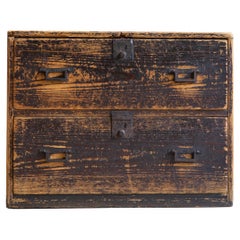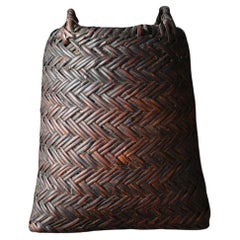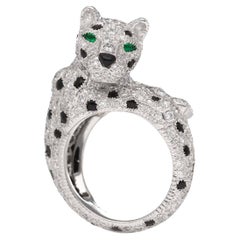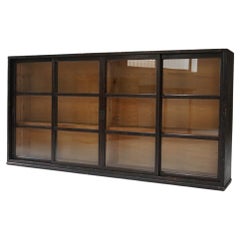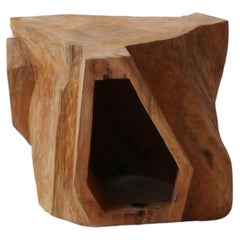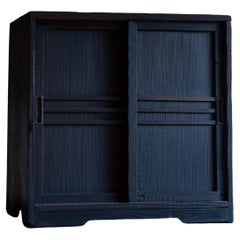Japan
Late 19th Century Japanese Edo Antique Japan
Iron
Early 20th Century Japanese Meiji Japan
Bamboo
1990s French Japan
Onyx, Emerald, Diamond, Platinum
Early 20th Century Japanese Japan
Wood
2010s Japanese Tribal Japan
Wood
Late 19th Century Japanese Folk Art Antique Japan
Wood, Cypress
21st Century and Contemporary Japanese Modern Japan
Diamond, Jade, Platinum
20th Century Japanese Showa Japan
Brass
Late 19th Century Japanese Edo Antique Japan
Wood
Mid-20th Century Indian Mid-Century Modern Japan
Cane, Teak
2010s Japanese French Provincial Japan
Iron
21st Century and Contemporary Japanese Modern Japan
Diamond, Emerald, Platinum
1890s Japanese Meiji Antique Japan
Gold Leaf
20th Century Japanese Modern Japan
Black Opal, Opal, Diamond, Platinum
21st Century and Contemporary Japanese Modern Japan
Diamond, Emerald, Platinum
2010s Turkish Kilim Japan
Wool, Natural Fiber
2010s French Japan
Onyx, Tsavorite, 18k Gold, Yellow Gold
20th Century Japanese Primitive Japan
Wood
15th Century and Earlier Japanese Other Antique Japan
Pottery
2010s Japanese Japonisme Japan
Brass
Early 20th Century Japanese Taisho Japan
Wood
Early 20th Century Japanese Taisho Japan
Wood
20th Century Japanese Showa Japan
Bronze
Mid-20th Century Japanese Showa Japan
Bamboo, Straw
19th Century Japanese Meiji Antique Japan
Granite
21st Century and Contemporary Japanese Modern Japan
Diamond, Ruby, 18k Gold, Yellow Gold
Mid-20th Century Indian Mid-Century Modern Japan
Cane, Teak
21st Century and Contemporary Japanese Modern Japan
Diamond, Emerald, Platinum
21st Century and Contemporary Caucasian Revival Japan
Wool, Natural Fiber, Organic Material
1980s Japanese Post-Modern Vintage Japan
Glass, Acrylic
21st Century and Contemporary Japanese Modern Japan
Diamond, Pink Sapphire, Platinum
21st Century and Contemporary Japanese Modern Japan
Diamond, Ruby, Platinum
Early 20th Century Japanese Japan
Bamboo
21st Century and Contemporary Japanese Modern Japan
Diamond, Ruby, Platinum
2010s Japanese Organic Modern Japan
Canvas, Thread, Straw
Mid-20th Century Japanese Japan
Wood
Mid-20th Century Indian Mid-Century Modern Japan
Aluminum
Early 20th Century Japanese Taisho Japan
Wood
Late 19th Century Japanese Meiji Antique Japan
Cedar, Paper
21st Century and Contemporary Japanese Modern Japan
Diamond, Jade, Gold, 18k Gold
Late 19th Century Japanese Meiji Antique Japan
Pottery, Paper
Early 20th Century French Industrial Japan
Iron
2010s Japanese Modern Japan
Steel
Early 20th Century Japanese Showa Japan
Bamboo
1990s Italian Space Age Japan
Steel
1890s Japanese Meiji Antique Japan
Wood, Cedar, Paper
21st Century and Contemporary Japanese Modern Japan
Diamond, Ruby, Platinum
1920s Japanese Taisho Vintage Japan
Wood, Silk
21st Century and Contemporary Japanese Modern Japan
Diamond, Ruby, Platinum
1960s Italian Mid-Century Modern Vintage Japan
Metal
21st Century and Contemporary Japanese Modern Japan
Diamond, Emerald, Platinum
21st Century and Contemporary Japanese Modern Japan
Diamond, Emerald, Platinum
20th Century Ivorian Other Japan
Wood
Early 20th Century Japanese Meiji Japan
Cedar
20th Century Japanese Showa Japan
Limestone
21st Century and Contemporary Turkish Revival Japan
Wool, Natural Fiber, Organic Material
2010s Uzbek Kilim Japan
Silk, Natural Fiber, Organic Material
2010s Turkish Kilim Japan
Natural Fiber, Organic Material
Late 20th Century Turkish Kilim Japan
Wool, Cotton, Natural Fiber
21st Century and Contemporary Japanese Modern Japan
Diamond, Emerald, Platinum
